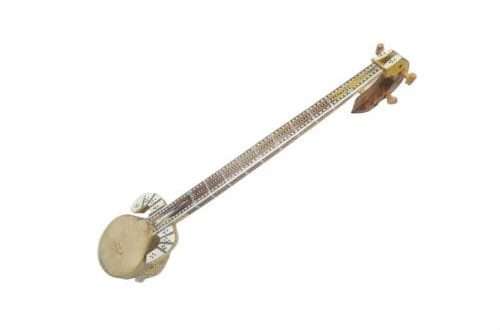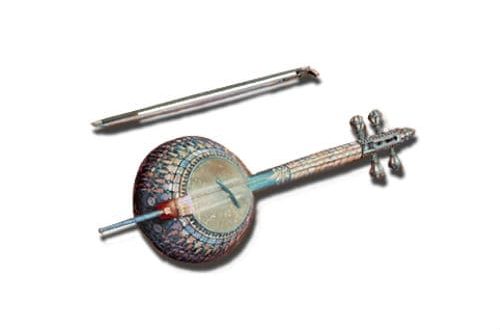
Viola – Musical Instrument
Contents
At first glance, an uninitiated listener can easily confuse this bowed string instrument with a violin. Indeed, apart from the size, they are externally similar. But one has only to listen to its timbre – the difference is noticeable immediately, chest and at the same time surprisingly soft and slightly muffled sound resembles a contralto – soft and expressive.
When thinking about stringed instruments, the viola is usually forgotten in favor of its smaller or larger counterparts, but the rich timbre and interesting history make it look closer. Viola is a philosopher’s instrument, without attracting attention, he modestly settled himself in the orchestra between the violin and the cello.
Read the history of the viola and many interesting facts about this musical instrument on our page.
Viola Sound
Languid, eloquent, noble, velvety, sensitive, powerful, and sometimes veiled – this is how you can describe the varied timbre of the viola. Its sound may not be as expressive and bright as that of a violin, but much warmer and softer.
The colorful timbre coloration is the result of the varied sound of each string of the instrument. The lowest pitched “C” string has a powerful, resonant, rich timbre that can convey a sense of foreboding and evoke gloomy and gloomy moods. And the upper “la”, in sharp contrast with other strings, has its own individual character: soulful and ascetic.
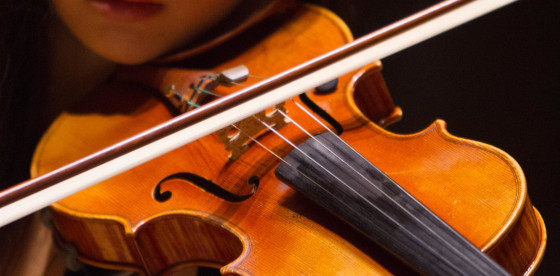
Many outstanding composers very pictorially used the characteristic sound of the viola: in the overture “1812” by P.I. Tchaikovsky – a church chant; in the opera “The Queen of Spades” – the singing of the nuns in the 5th scene, when Herman is presented with a funeral procession; in D.D. Shostakovich ‘s symphony “1905” – the melody of the song “You fell a victim.”
Viola Photo:
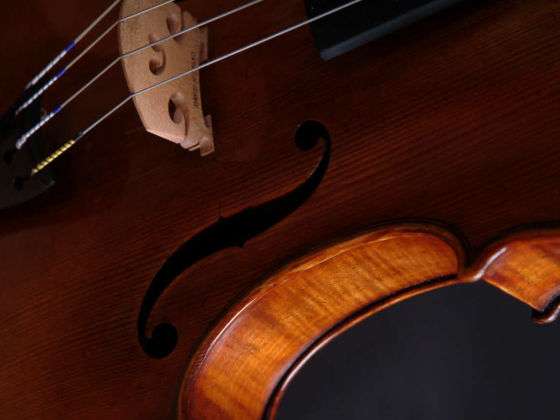
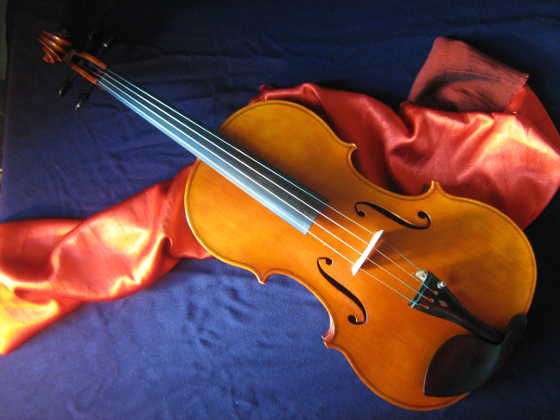
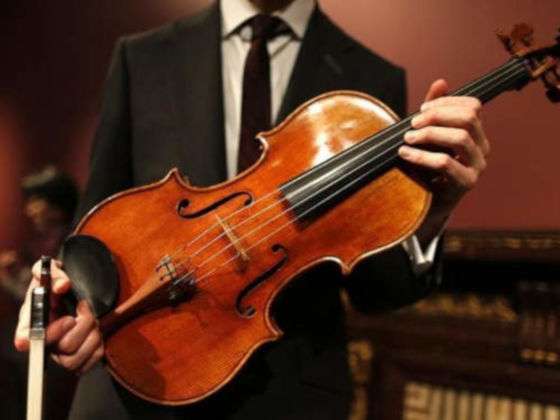
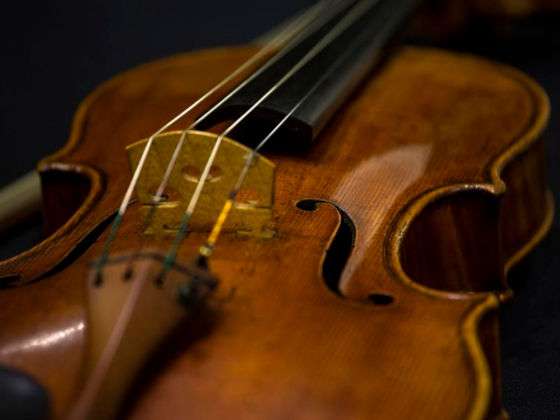
Interesting Facts about viola
- Such great composers as I.S. Bach , V.A. Mozart , L.V. Beethoven , A. Dvorak , B. Britten, P. Hindemith played the viola.
- Andrea Amati was a very famous violin maker of his time, and in 1565 King Charles IX of France ordered him to make 38 instruments (violins, violas and cellos) for the musicians of the royal court. Most of those masterpieces were destroyed during the French Revolution, but one viola survives and can be seen at the Ashmolean Museum in Oxford. It is larger, with a body length of 47 cm.
- Another noteworthy viola, on the body of which was depicted a crucifix, was made by the sons of Amati. The instrument belonged to the famous violist L.A. Bianchi.
- Violas and bows made by famous masters are extremely rare, so a viola made by A. Stradivari or A. Guarneri is more expensive than violins by the same masters.
- Many outstanding violinists such as: Niccolo Paganini , David Oistrakh, Nigel Kennedy, Maxim Vengerov, Yehudi Menuhin perfectly combined and still combine playing the viola with playing the violin.
- In the 1960s, the American rock band The Velvet Underground, the English rock band The Who, and nowadays Van Morrison, the rock bands the Goo Goo Dolls, and Vampire Weekend all feature the viola prominently in their arrangements. songs and albums.
- The names of the instrument in different languages are interesting: French – alto; Italian and English – viola; Finnish – alttoviulu; German – bratsche.
- Yu. Bashmet was recognized as the best violist of our time. For 230 years, he is the first who was allowed to play the instrument of V.A. Mozart in Salzburg. This talented musician actually replayed the entire repertoire written for the viola – about 200 pieces of music, of which 40 were composed and dedicated to him by contemporary composers.

- Yuri Bashmet still plays the viola, which he bought for 1,500 rubles in 1972. The young man made money in discos playing songs from the Beatles’ repertoire on the guitar. The instrument is over 200 years old and was made by the Italian craftsman Paolo Tastore in 1758.
- The largest ensemble of violists consisted of 321 players and was assembled by the Portuguese Violists Association at the Suggia Concert Hall in Porto, Portugal on March 19, 2011.
- Violists are the most popular characters in orchestral anecdotes and jokes.
Popular works for viola:
V.A. Mozart: Concertante Symphony for Violin, Viola and Orchestra (listen)
Audio PlayerA. Vietan – Sonata for viola and piano (listen)
A. Schnittke – Concerto for viola and orchestra (listen)
Viola construction

Outwardly, the viola is very similar to the violin, the only difference is that it is slightly larger in size than the violin.
The viola consists of the same parts as the violin: two decks – upper and lower, sides, fretboard, moustache, stand, fingerboard, darling and others – a total of 70 elements. The upper soundboard has the same sound holes as the violin, they are usually called “efs”. For the manufacture of the viola, only the best samples of well-aged wood are used, which are varnished, made by masters according to their unique recipes.
The body length of the viola varies from 350 to 430 mm. The length of the bow is 74 cm and it is slightly heavier than the violin one.
The viola has four strings that are tuned a fifth lower than the strings of the violin.
The dimensions of the viola do not correspond to its formation, for this the optimal length of the body of the instrument must be at least 540 mm, and in fact only 430 mm and then the largest. In other words, the viola is too small in relation to its tuning – this is the reason for its majestic timbre and distinctive sound.
The viola has no such thing as “full” and can range in size from “just bigger than a violin” to massive violas. It is worth noting that the larger the viola, the more saturated its sound. However, the musician chooses the instrument on which it is convenient for him to play, it all depends on the build of the performer, the length of his arms and the size of the hand.
Today, the viola is becoming an increasingly recognized instrument. Manufacturers continue to experiment with different forms to maximize its unique sonic qualities and create new ones. For example, an electric viola does not have an acoustic body, since there is no need, because the sound appears with the help of amplifiers and microphones.
Application and repertoire
The viola is mainly used in a symphony orchestra and, as a rule, it includes from 6 to 10 instruments. Previously, the viola was very unfairly called the “Cinderella” of the orchestra, because despite the fact that this instrument has a rich timbre and exquisite sound, it did not receive much recognition.
The timbre of the viola is perfectly combined with the sound of other instruments, such as violin, cello, harp, oboe, horn – all of which are part of the chamber orchestra. It should also be noted that the viola occupies an important place in the string quartet, along with two violins and a cello.
Despite the fact that the viola is mainly used in ensemble and orchestral music, it is also gaining popularity as a solo instrument. The first to bring the instrument to the big stage were the English violists L. Tertis and W. Primrose.
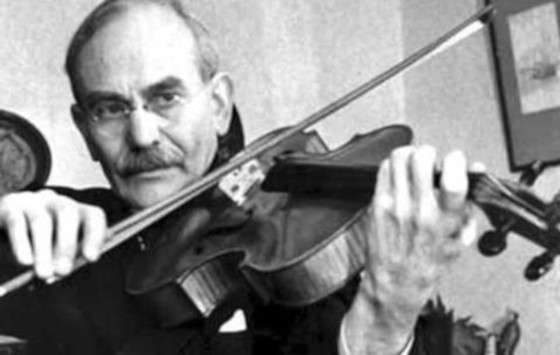
It is also impossible not to mention the names of such outstanding performers as Y. Bashmet, V. Bakaleinikov, S. Kacharyan, T. Zimmerman, M. Ivanov, Y. Kramarov, M. Rysanov, F. Druzhinin, K. Kashkashyan, D. Shebalin, U Primrose, R. Barshai and others.
The music library for viola, in comparison with other instruments, is not very large, but recently more and more compositions for it have come out from under the pen of composers. Here is a small list of solo works that were written specifically for the viola: concertos by B. Bartok , P. Hindemith, W. Walton, E. Denisov, A. Schnittke , D. Milhaud, E. Kreutz, K. Penderetsky; sonatas by M. Glinka , D. Shostakovich, I. Brahms, N. Roslavets, R. Schumann, A. Hovaness, I. David, B. Zimmerman, H. Henz.
Viola playing techniques
А вы знаете каких усилий требует игра на альте? Его большой корпус плюс длина грифа требуют от музыканта немалую силу и ловкость, ведь исполнение на этом инструменте сложно даже физически. Из-за больших размеров альта техника игры, по сравнению со скрипкой, несколько ограничена. Позиции на грифе располагаются дальше, что требует большой растяжки пальцев левой руки у исполнителя.
The main method of sound extraction on the viola is the “arco” – moving the bow along the strings. Pizzicato, col lego, martle, detail, legato, staccato, spiccato, tremolo, portamento, ricochet, harmonics, the use of mute and other techniques used by violinists are also subject to violists, but require a certain skill from the musician. One more fact should be paid attention to: violists, for the convenience of writing and reading notes, have their own clef – alto, nevertheless, they must be able to read notes in the treble clef. This causes some difficulties and inconvenience when playing from a sheet.
Teaching the viola in childhood is impossible, as the instrument is large. They begin to study on it in the last classes of a music school or in the first year of a music school.
History of the viola

The history of the viola and the so-called violin family are closely related. In the past of classical music, the viola, although neglected in many aspects, played a rather important role.
From the ancient manuscripts of the Middle Ages, we learn that India was the birthplace of bowed string instruments. Tools traveled with traders to many countries of the world, first came to the Persians, Arabs, peoples of North Africa and then in the eighth century to Europe.
The violin family of the viola appeared and began to develop around 1500 in Italy from previous bowed instruments. The shape of the viola, as they say today, was not invented, it was the result of the evolution of previous instruments and the experiments of different masters to achieve the ideal model.
Some argue that the viola preceded the violin. A strong argument supporting this theory is contained in the name of the tool. First viola, then viol + ino – small alto, soprano alto, viol + one – large alto, bass alto, viol + on + cello (smaller than violone) – smaller bass alto. This is logical, One way or another, but the first who made violin instruments were the Italian masters from Cremona – Andrea Amati and Gasparo da Solo, and brought them to perfection, precisely with the current form, Antonio Stradivari and Andrea Guarneri. The instruments of these masters have survived to this day and continue to delight listeners with their sound. The design of the viola has not changed significantly since its inception, so the appearance of the instrument familiar to us is the same as several centuries ago.
Italian craftsmen made large violas that sounded amazing. But there was a paradox: the musicians abandoned large violas and chose smaller instruments for themselves – it was more convenient to play them. The masters, fulfilling the orders of the performers, began to make violas, which were slightly larger in size than the violin and were inferior in beauty of sound to the former instruments.
The viola is an amazing instrument. Over the years of its existence, he still managed to turn from an obscure “orchestral Cinderella” into a princess and rise to the same level as the “queen of the stage” – the violin. Eminent violists, having broken all stereotypes, proved to the whole world how beautiful and popular this instrument is, and the composer K. Gluck laid the foundation for this , entrusting the main melody in the opera “Alceste” to the viola.
Viola FAQ
What is the difference between violin and alt?
Both of these tools are string, but Alt sounds in a lower register. Both tools have the same structure: there is a vulture and a case, four strings. However, the alt is larger than the violin in size. Its housing can be up to 445 mm long, also the vulture of Alta is longer than that of the violin.
What is it harder for playing an viola or violin?
It is believed that it is easier to play on Alt (viola) than on the violin, and until recently, ALT was not considered a solo tool.
What is the sound of Viola?
Viola strings are configured on the quints below the violin and on the octave above the cello – C, G, D1, A1 (to, Salt of the Small Oktava, Re, La First Oktava). The most common range is from C (to a small octave) to E3 (my third octave), higher sounds are found in solo works.



